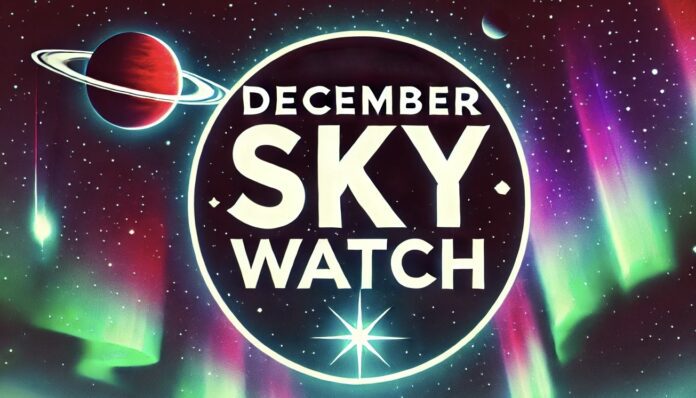North America – December’s night sky is brimming with celestial wonders, from the brilliant “Christmas Star” to dazzling Northern Lights and a Mars-Moon conjunction. Stargazers across North America are in for a treat.
Jupiter will steal the show on Saturday, Dec. 7, as it reaches opposition, aligning with Earth and the Sun. Dubbed the “Christmas Star,” Jupiter will shine brightly in the eastern sky, showing its entire disk through telescopes or binoculars. This marks the best time of the year to view the gas giant. Even without equipment, it will be a prominent sight all night.
The Northern Lights, or aurora borealis, will add a splash of color to December evenings. Increased solar activity during the Sun’s peak cycle enhances the likelihood of these vibrant displays. Residents in northern states like Minnesota, Wisconsin, and Michigan should keep an eye on the skies after sunset for glowing waves of green, purple, and red.
Mars will also take center stage on Tuesday, Dec. 17, when it pairs closely with the waning gibbous Moon. Look to the east just after sunset for the red planet glowing near the Moon. Earlier in the month, Venus and a crescent Moon will create a stunning conjunction on Wednesday, Dec. 4, in the western sky.
According to astronomers, dark-sky locations and clear weather conditions are ideal for viewing these celestial phenomena. Mobile apps can help pinpoint exact locations and times. For best results, avoid areas with light pollution and dress warmly.
Be sure to follow us on Instagram & like us on Facebook to stay up-to-date on more relevant news stories and SUPPORT LOCAL INDEPENDENT NEWS!




